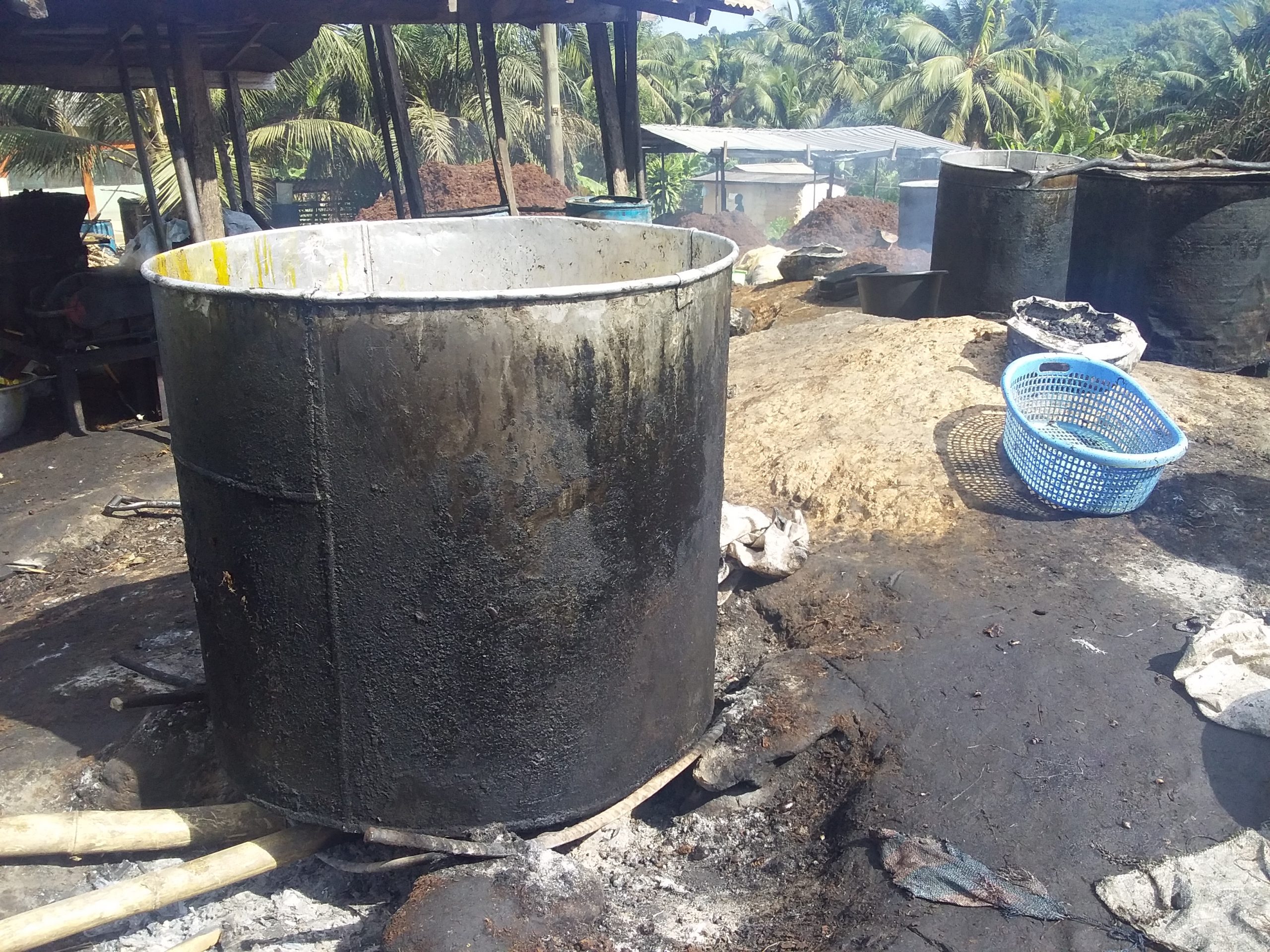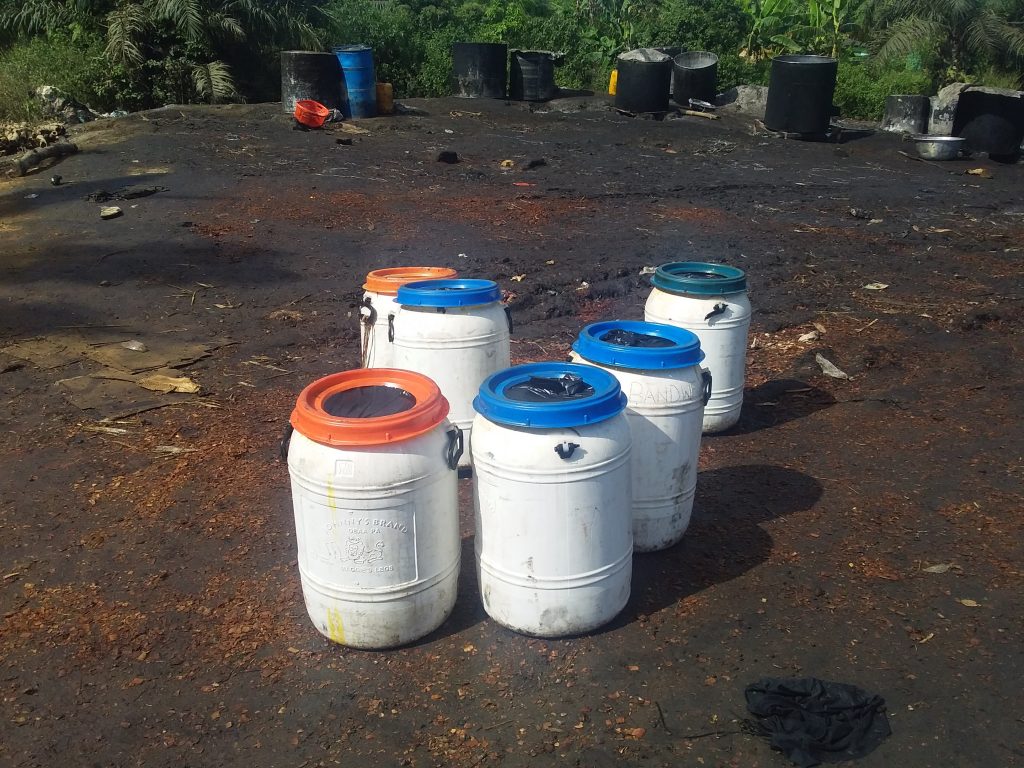Artisanal Palm Oil Processing in an Industrial Enclave in Ghana: Resilience, Resistance and Elision

Written by: Gertrude Dzifa Torvikey and Fred Dzanku
Artisanal and industrial palm oil processing have co-existed within Ghana’s production enclaves for a long time. The relationship between them tends to be complex, reflecting resistance, resilience, and systematic elision of artisanal processors in agricultural and trade policy. This was the focus of our recent publications, APRA Working Paper 85 and Policy Brief 29. While the impacts of the two processing models are not linear, we highlighted the impacts of industrial mills on the expansion of artisanal processing in producing areas. We studied the relationships between the two spheres of production in two districts in the Western region of Ghana, a major oil palm producing frontier. Acknowledging the importance of rural diversity, complexity, and difference in agriculture-based off-farm activities, we examined the effect of community and household level factors on palm oil processing incidence and intensity as well as the impact of processing on food (in)security. These issues are addressed using a mixed methods approach that includes a qualitative study and a survey of 802 households in 23 communities.
In general, only a modest proportion (about nine in 50) of households in our sample process palm oil in commercial quantities. They operate as family businesses which employ about 67 per cent of household members, on average. The processing units are important avenues for rural employment in the face of rising unemployment, even in rural areas. Although our profit thresholds could be slightly overestimated due to the omission of equipment depreciation cost, we observed that only 18 per cent of artisanal processing households make losses, and the average profit per contributing family worker of over US$500 or approximately US$972 (in purchasing power parity) is well above the US$1.90 international poverty line. Strikingly, the majority (about 95 per cent) of artisanal palm oil processing households produce their own raw material (oil palm fruits) for processing. The vertically integrated nature of the artisanal processing business thus calls for policies that address the needs of smallholder farmers and artisanal processors concurrently.
Our findings show that nearness to an industrial processing company decreases the probability that a household will process their fresh fruits into palm oil, preferring rather to sell to industrial processing companies. While communities located far away from oil palm companies process more palm oil, they tend to have market access challenges. Related to this, we found from the qualitative study that palm oil processing is more common in communities with vibrant daily markets and alternative economic livelihood activities than in communities that are isolated from markets and lack alternative livelihood activities. In terms of household level factors, we found that the probability and intensity of palm oil processing increases when the household is: a heterosexual couple household, female-headed, has male labour available, and has initial wealth. We see that, in general, more women are engaged in palm oil processing than men because processing is mostly a home-based activity that allows women to carry out their reproductive and productive roles concurrently. However, despite their greater presence, their activities are less mechanised and their outputs tend to be lower than those of their male counterparts.

We put forward the hypothesis that artisanal palm oil processing reduces the incidence of food insecurity because it offers the opportunity for income generation over longer periods of the year than the harvesting period alone. Given that the oil can be stored and then sold even when the palm fruit season has ended, it allows households to maintain consistent consumption in a seasonally volatile environment. However, though we found that the proportion of artisanal palm oil processing households that experienced seasonal food insecurity was eight percentage points less than their non-processing counterparts, this difference was not large enough to rule out chance variation. Our cautious conclusion is that a larger sample may be required to provide more statistical power to detect an effect, if indeed there is one.
Our findings show that multiple factors affect artisanal palm oil processing in rural areas. Development policies that aim at agro-industrialisation through the channel of micro and small-scale rural industries must thus address multiple constraints by creating access to markets though the provision of rural infrastructure, such as roads, and facilitating access to artisanal processing equipment, particularly for women and girls. These could help to propel rural economies and create decent jobs, which plantation agriculture and industrial palm oil processing companies alone are unable to achieve in these rural communities. This may require state-regulated fair pricing regimes for oil palm fruits and investments that create alternative livelihood opportunities in deprived communities.
